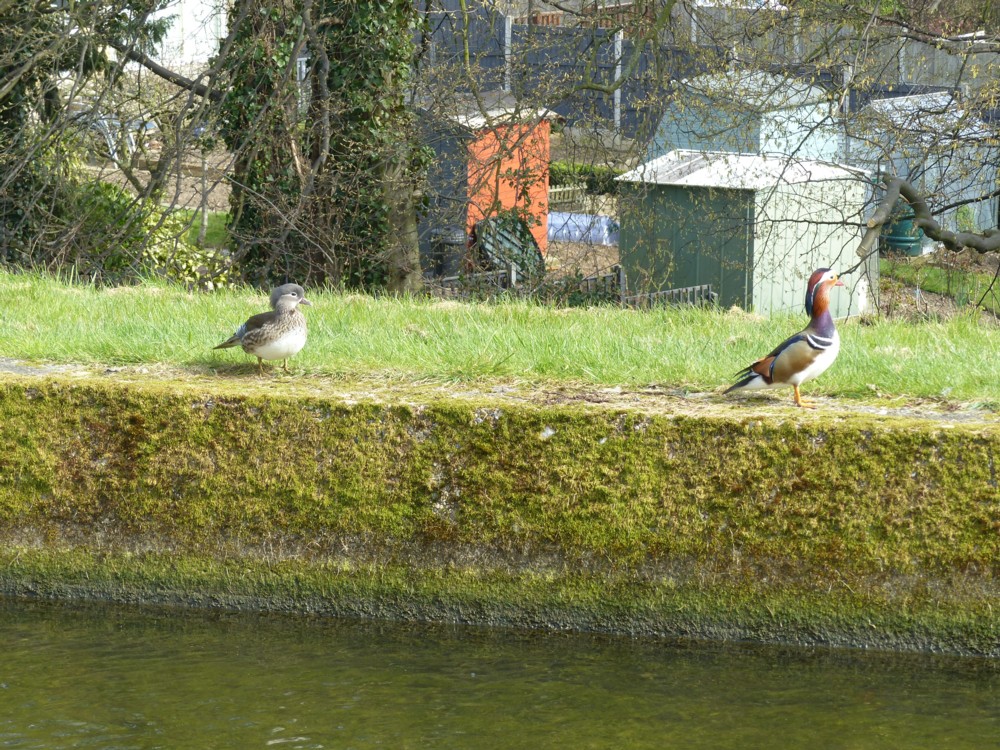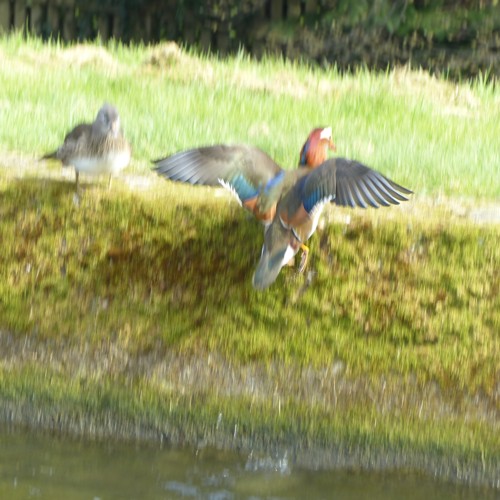I’ve already done one posting about the walk that GodDaughter One and I did along the New River (further reaches of) last Saturday, and as I result I learned (thank you Natalie) about Pollarding. Here is another posting, about a duck which GD1 and I observed that day on the New River, and this time what I hope to learn is what make of duck this is.
Here is the duck:
Here are a couple of shots of the duck with his Mrs.
Here’s one of those shots where the principle of a good photo photoed badly is taken to its outer limits. You can see what I was going for and how great it might have been, but you can also see that it didn’t work:
Don’t bother clicking on that one. No point in that being any bigger, is there?
To compensate for the above failure, here is a final head shot of Mr Duck:
I don’t usually post pictures of wildlife on this blog, basically because I feel that I don’t have anything to contribute. Other people – a lot of other people – do this several dozen times better than I ever will. But this duck genuinely interested me. Until I saw it, I had no idea that such a bird was to be seen in the vicinity of London, looking like it had just flown in from Africa or Brazil or some such luridly colourful place.
And whereas, when you have a question about the modern world, you can usually now just type that question into a computer and up comes the answer in just a few seconds, that doesn’t work when you have photoed a fancy-looking bird. I’m sure that this will come, but unless I entirely missed it, the time when this works is not with us quite yet. I cannot now just stuff this photo into my computer and say: What brand of bird is this?
Perhaps this can already be done. In which case a commenter can tell me this, and tell me the result that he or she got when he or she carried out this procedure. He or she can tell me both about photo-searching, and about the duck. Win win.
Blog and learn. That’s the plan, anyway.
After writing the above, I tried typing “fancy duck london” into the www and asked for pictures, and a picture appeared in among all the irrelevant nonsense that looked like what I saw. So now, I know the answer:
Specimens frequently escape from collections, and in the 20th century a large feral population was established in Great Britain; …
Mandarin duck. Blog and learn.





